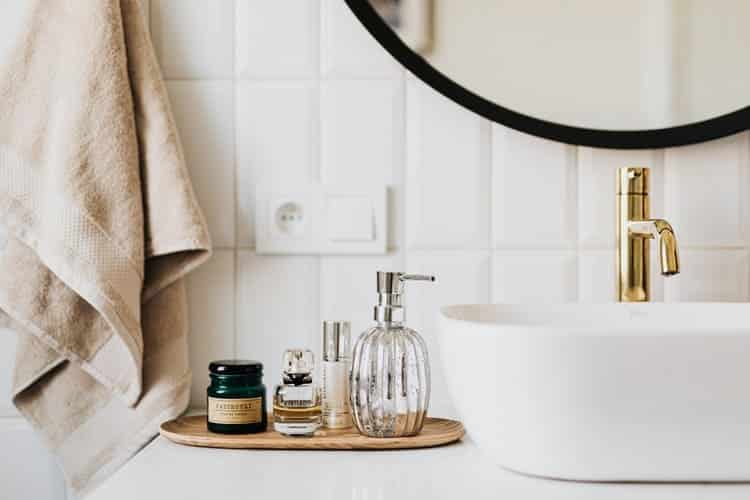
Bamboo towels are unique. If you have bamboo towels, you likely love them. If you don’t own one already, about time you give it a try. It might sound like an exaggeration, but bamboo towels are the future of towels. Conventional towels that we use for cleaning have a very negative impact on the environment. According to the Guardian, paper towels are the least environment-friendly way of cleaning our hands or surfaces, and that’s just scratching the surface. Almost all of our old towels end up in landfills. Since synthetic towels aren’t necessarily biodegradable, they stay there for years. So, it’s essential to think about a feasible alternative to conventional towels. And that’s where bamboo towels come in.
Bamboo towels are the greener alternative to the otherwise mundane fabric towels. Bamboo is a robust and fast-growing plant that produces 34% more oxygen than trees of that size. They can also grow as fast as up to 3-4 feet per day, so they are beneficial for the environment. Moreover, bamboo fabric is slowly getting more and more popular among people since they’re almost four times more absorbent than regular towels. Also, since they are made of organic materials, they’re biodegradable and doesn’t stay underground for years.
If you’re looking for the perfect bamboo towel for you, Towel Reviewer has got you covered. They have a list of some of the best bamboo towels out there to help you find the right product for you.
That being said, here are a few tips on how to wash a dish towel to keep it clean and fresh:
● Cut the loose fibers before washing:
When we use a towel vigorously, it’s ends get loose, and the fibers lose their integrity. And when these loose ends are tumbled and cleaned either by a washing machine or by hand, the fibers get even more damaged, and the towel loses longevity. So, before taking your towel to wash, look for loose fibers here and there. If you see one, just cut it up with a scissor, and you’re good to go. Don’t cut too much, or you might damage the towel itself, so be careful with the scissors.
● Soak in hot water:
Once you’re done cutting the loose ends, soak the towel in hot water with detergent and few teaspoons of vinegar. The hot water allows the detergent to set in properly while the vinegar acts as an odor buster. Let it soak for at least 15 minutes and then take it to the next step.
● Wash them separately in a hot cycle:
Firstly, keep the bamboo towels separate from other clothes. Otherwise, the fine threads of the bamboo will be damaged by other rough fabrics. Load them on the washing machine and start a hot cycle. The water should be moderately hot, not too hot or cold. Boiling water would damage the bamboo fabric while cold water won’t clean it properly. Don’t keep the cycle running for too long. 5-6 minutes is perfect. Afterward, move to the next steps.
● Rinse them with warm water:
If you don’t have a washing machine or plan to wash your towels by hand, this step is for you. Take your towels out of the warm water and give them a thorough rinse. You can wash them with some pressure or use a cleaning board to have a deeper clean. If you see spots in any part of the towel, scrub the region with a brush. Then, rinse it with warm water. That’s it, you’ve cleaned your towel. The next step is to dry.
● Dry them in the sun:
Drying clothes in the sun is both beneficial for clothes as well as environment friendly. Please take all the wet towels and let them dry in the sun. The sunlight will genuinely help the bamboo fabric to flourish. Also, if you have a dryer, take the towels out of the sun once it’s 80% dry and let it tumble dry. Tumble drying will help the fibers be more fluffy and absorbent.
● Never use bleach:
We use bleach as a reliable stain remover. It’s a perfect choice for white clothes. However, since the bamboo fabric is slightly different from regular fabrics, bleach is not a good idea. Bleach damages the organic composition of bamboo and damages it’s integrity. Using too much bleach can damage and tear your towels.
If the odor is an issue for you, mix vinegar with detergent, add it on the stain and let it dry. Afterward, follow the previous steps. If you’re worried about stains, add lemon juice and vinegar and see the colors and odor vanish.
● Ease up on the fabric softeners:
Fabric softeners are a household name when it comes to woolen clothes and scarves. They add a protective layer on top of the wool and make it both long-lasting and soft. However, the composition of yarn and bamboo fabric is entirely different. The chemicals in the fabric softener make the entire material very prickly and hard to the skin. Also, if the cloth comes in contact with wool very often, it loses it’s integrity and might get damaged soon. Tumble drying or storing correctly is a better alternative to fabric softeners when it comes to the towel’s softness.
Conclusion:
In current times, sustainability and longevity are crucial for products. We’re moving away from flashier products that won’t last a while and investing in products and technologies that would last for a long time without leaving a mark on the environment. And if we’re looking for a sustainable alternative to conventional towels and cleaning cloths, a bamboo towel is exactly what we’re looking for. Affordable, extra absorbent, and available in a plethora of designs and colors, bamboo towels have the potential to create a storm in the way we look at towels. If you have a bamboo towel and the cleaning process seems hard for you, don’t worry about it. This article features everything you need to know.
